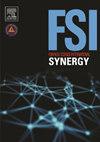一种跨学科的综合方法,以提高法医死亡调查中腐烂尸体的鉴定结果
Q1 Social Sciences
引用次数: 0
摘要
成功查明身份不明的死者是解决此类死亡造成的全球负担和健康危机的一个优先事项。本文提出了一种新的跨学科综合方法。其目的是促进法医线索进行法医死亡调查,利用外部专业知识提供额外信息,作为使死者重新人性化的一种行为。方法和分析协议有三个关键阶段。在敏感的医学法律环境中,这种跨学科研究方法首先需要建立一个健全的伦理框架(执行许可、合同和伦理),以保持证据的完整性并保护相关人员。它还需要促进生成的面部描绘向公众传播,以提供调查线索。其次,它需要识别有用的和可用的科学分析,并建立多学科团队。其中包括法医死亡调查和法医病理学尸检记录审查,包括法医背景和案件数据信息(如唯一标识符和个人物品)、放射学分析、骨传记人类学评估、常规和专业法医遗传分析,以及可能的稳定同位素分析,以提供对该人的更丰富的了解和了解。第三,这些多因素数据需要整合到一个叙述中,包括面部重建和描述,以通过公众呼吁对未解决案件的信息进行记忆和识别。如果跟踪调查线索,并确定可能的法医鉴定,则可以采用常规方法确认身份(例如DNA分析)。虽然这是第一次在非洲范围内采用这种方法,但该议定书可以复制并适用于其他区域,以改进法医死亡调查。最终,促进和改进身份识别可以提供社会正义和家庭结束。本文章由计算机程序翻译,如有差异,请以英文原文为准。
A transdisciplinary integrated approach to improve identification outcomes for decomposed decedents in medicolegal death investigations
Introduction
Successful identification of unidentified decedents is a priority to address the global burden and health crisis created by such deaths. A newly developed transdisciplinary and integrative approach is presented as a protocol. The aim is to facilitate forensic leads for medico-legal death investigations that utilize external expertise to provide additional information as an act of re-humanization of the decedent.
Methods and analysis
There are three critical phases to the protocol. This transdisciplinary research approach in sensitive medicolegal environments requires, first, establishment of a robust ethical framework (implementation of permissions, contracts, and ethics) to maintain evidentiary integrity and protect those involved. It also needs to facilitate dissemination of the generated facial depictions to the public to enable investigative leads. Second, it requires the identification of useful and available scientific analyses and establishment of the multi-disciplinary team. These include a medicolegal death investigation and a forensic pathology postmortem record review inclusive of forensic contextual and case data information (such as unique identifiers and personal belongings), radiographic analyses, osteobiography anthropological assessment, conventional and specialized forensic genetic analyses, and possibly stable isotope analyses to provide a richer picture and understanding of the person. Third, these multifactorial data need to be integrated into a narrative, including facial reconstruction and depiction to elicit memory and identification via public appeals for information on unresolved cases. Should an investigative lead be followed, and a possible forensic identification established, conventional methods to confirm identity can be applied (e.g. DNA profiling). While it is the first time this approach has been applied in an African context, this protocol can be replicated and adapted for other regions to improve medicolegal death investigations, Ultimately, facilitating and improving identification can provide social justice and familial closure.
求助全文
通过发布文献求助,成功后即可免费获取论文全文。
去求助
来源期刊

Forensic Science International: Synergy
Social Sciences-Law
CiteScore
4.90
自引率
0.00%
发文量
75
审稿时长
90 days
 求助内容:
求助内容: 应助结果提醒方式:
应助结果提醒方式:


